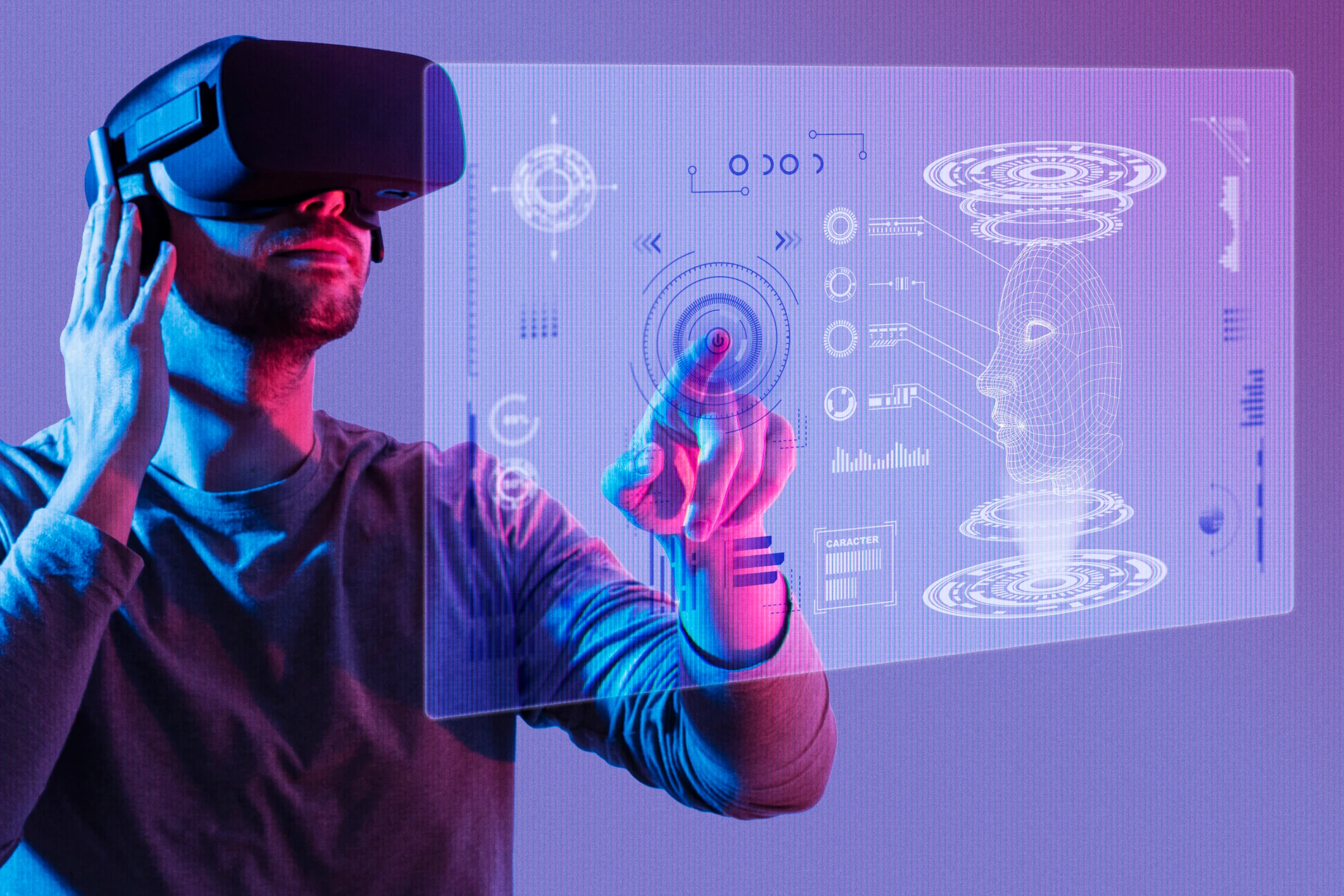Introduction
Digital marketing has changed from static web pages and banner ads to tailored experiences and tactics that work across all channels. Now, thanks to the Metaverse, it is on the brink of its most important time. The question is no longer if, but how quickly the Metaverse will change how brands talk to customers.
What the Metaverse is?
Where it came from and how it changed?
Neal Stephenson’s 1992 sci-fi novel Snow Crash was the first to use the word “Metaverse.” Today, it means a shared, permanent virtual space where users can interact with each other and digital environments in real time through avatars.
The Main Technologies That Make the Metaverse Work
A combination of technologies, such as blockchain, virtual reality (VR), augmented reality (AR), artificial intelligence (AI), and 5G, makes up the Metaverse. Each of these parts makes it possible to have digital environments that are immersive, decentralized, and happen in real time.
The state of digital marketing: then and now
Search engine optimization, content marketing, and social media advertising are all examples of digital-first marketing methods that have replaced traditional media. But the Metaverse adds a new level that puts interaction ahead of impression and presence ahead of visibility.
Why Brands Are Interested in the Metaverse?
People that got in on the Metaverse early saw it as more than a trend; they see it as a change in the way things are done. Brands who are prepared to try new things and be creative can get ahead of the competition by using it to make hyper-engaging surroundings.
Brand experiences that are immersive
1. Virtual Showrooms and Pop-ups
Brands may make virtual locations that seem like genuine stores, where people can shop, interact, and explore in real time. These showrooms are not constrained by geography or inventory.
2. Augmented Reality Shopping
AR allows consumers to visualize products in their own environment. For instance, trying on clothes or arranging furniture in a virtual replica of their home transforms passive browsing into physical discovery.
Gamification as a Marketing Strategy
Gamification blends entertainment with brand messaging. Quests, points, and unlockable content keep users engaged while subtly reinforcing brand identity. It promotes retention and fuels word-of-mouth promotion.
Virtual Influencers and Avatars
Digital personas like Lil Miquela have shown the feasibility of virtual influencers. These avatars may model merchandise, endorse services, and even host live events, all without human constraints or disputes.
NFTs and Digital Collectibles in Branding
Non-fungible tokens (NFTs) give scarcity and ownership in a digital environment. Brands can make limited-edition collectibles or loyalty prizes that are only available to a small group of people. This makes their marketing more exclusive.
Marketing that is unique to you in a 3D world
In the Metaverse, data isn’t just clicks and scrolls; it’s also movement, activity, and interaction. This multidimensional data enables for more subtle customisation, making every experience feel tailor-made.
Social Commerce Redefined
In the Metaverse, social commerce combines e-commerce with entertainment. Users can shop while talking to friends, watching concerts, or going to digital fashion displays, which makes the shopping experience more fluid.
Getting information and insights about customers in the metaverse
The behavioral data collected in virtual environments gives us detailed information about what people like and how they make decisions. Brands may improve their tactics by looking at spatial data, engagement metrics, and how avatars act.
Customer service and engagement in real time
AI-powered avatars can help people in real time, walk them through product experiences, or even sell them more based on what they say and do. This service is constantly on and available, which makes customers happier.
Ads in Virtual Spaces
1. Virtual cities with billboards
Digital billboards in busy virtual places, like Times Square, can make brands more visible. These advertising can even change based on the profiles of the people who see them.
2. Virtual Items with a Brand Name
Selling or giving away brand-name apparel, accessories, or skins for avatars creates brand loyalty and acts as mobile billboards in the Metaverse.
Events and Experiences: The Rise of Virtual Launches
In the Metaverse, product debuts, music festivals, and fashion exhibitions can happen anywhere in the world and reach a huge number of people. Brands can put on events that people will remember forever and that can be seen all across the world.
Tokenization and Loyalty Programs
Cryptographic tokens can be used instead of points systems. Users can earn, trade, or spend tokens on virtual platforms, which makes loyalty a bigger part of the digital economy.
Problems and Risks
1. Concerns about privacy
When environments are immersive, privacy concerns go up. The information gathered is more personal, which raises concerns about consent, storage, and misuse.
2. Limitations of Technology
Even while the Metaverse is growing quickly, high-quality experiences need powerful hardware and strong internet connections, which could make it hard for some groups to get to them.
3. Uncertainty about regulations
The rules for virtual environments are still changing. There are still questions about digital property rights, the ethics of advertising, and taxes.
Examples of Metaverse Marketing
1. Nike’s Nikeland on Roblox
Nike built a branded Metaverse experience where people could play games, try on virtual footwear, and receive incentives. This brought people together and made their products more visible.
2. The Gucci Garden Experience
Gucci’s interactive digital exhibition gave visitors the chance to collect objects and learn about the brand’s history in a creative way, making it hard to tell the difference between luxury and affordability.
The Part AI and Automation Play in the Metaverse
AI will make things more personal, make it easier to create content, and make virtual assistants smarter. Automation will be the key to making the Metaverse bigger, from predictive analytics to self-driving brand ambassadors.
Trends and Predictions for the Future
Expect VR headsets to become more popular, avatars that look real, economies that aren’t controlled by one company, and more cross-platform compatibility. The Metaverse is about to become a second economy that affects business in the actual world.
Conclusion: Long-Term Growth Through Strategic Integration
The Metaverse is not a new way to do digital marketing; it’s an evolution. Brands that use immersive methods now will be in charge of the economy in the future. Being able to change, be creative, and be willing to reach out to audiences in completely new ways are all important for success.







